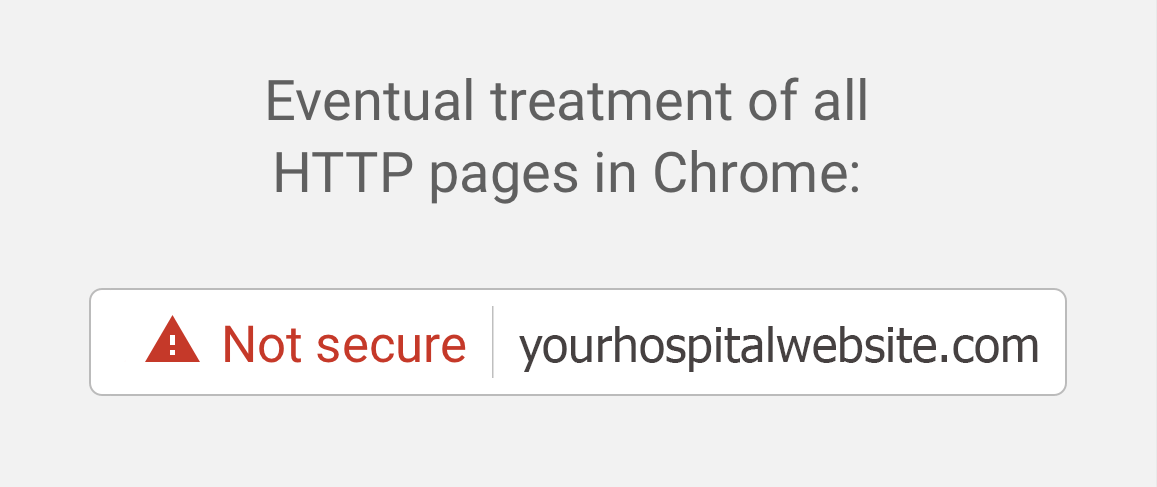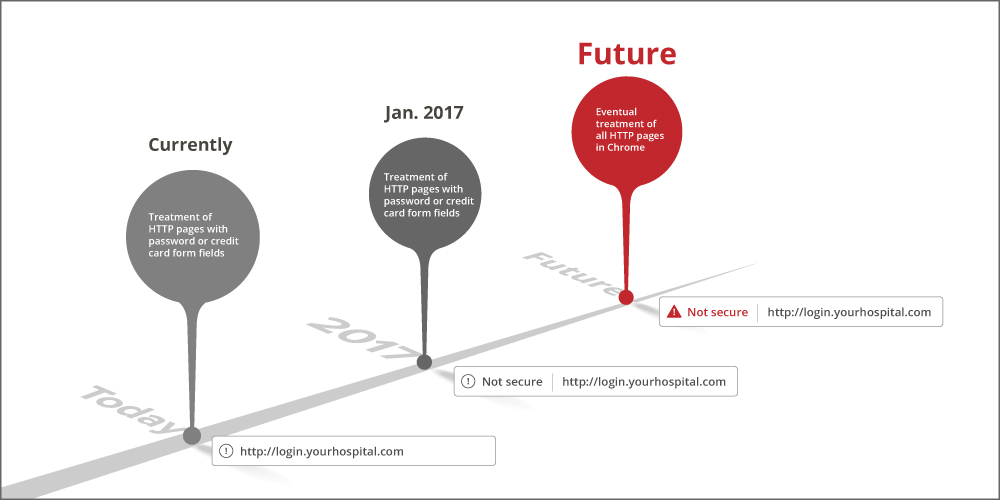But does the prediction hold for healthcare marketing? Are we really going to see a hospital CMO’s technology budget outpace the CIO’s technology budget?
I don’t think so. Nor should it. After all, in the healthcare space technology budgets are also responsible for clinical care, operations and more. Given this, it’s difficult to imagine a future in healthcare where marketing spends more dollars on tech than IT does.
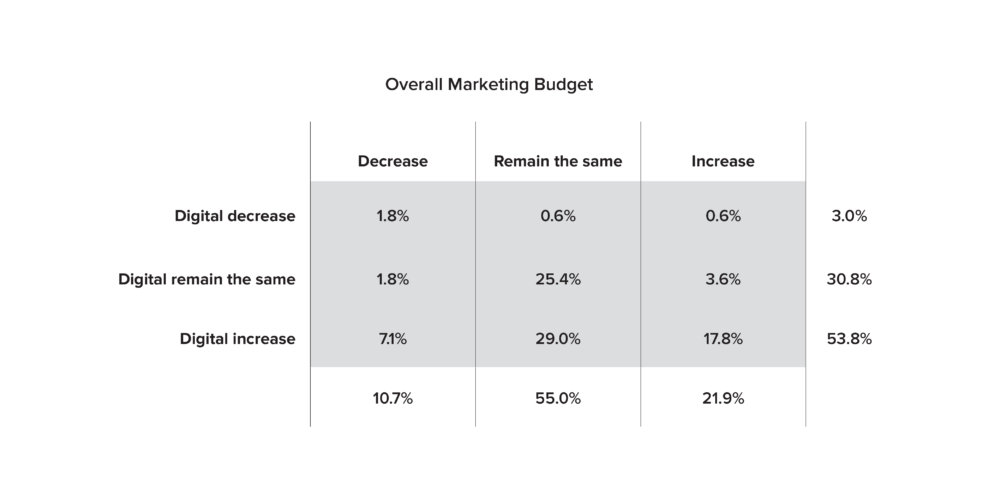
Even so, we’re still experiencing a sea change in healthcare marketing. Digital’s share of the marketing budget is growing (see table above), and part of this is clearly due to increasing investments in technology. From fancy new features (like personalization and predictive analytics), to whole new technology stacks that facilitate cohesive and contextual digital experiences, there’s no doubt that martech is putting pressure on marketing budgets across the industry. And as we dig into the healthcare-specific data we’ve gathered, we can understand this larger shift by looking at CRM adoption and using it as a lens through which we can see the bigger trends shaping marketing in healthcare.
CRM As Proxy For Martech Budget Increases
Our new research reveals that across the spectrum of industry-lagging, leading and average organizations, many have begun to embrace CRM systems. ~40% – ~50% already use one, and ~30% of respondents plan to implement CRM in the coming year.
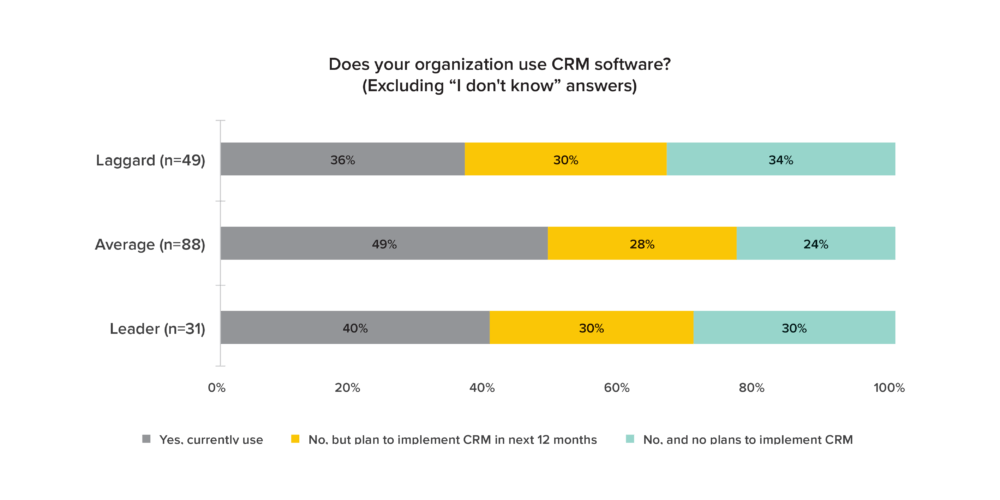
But just having the technology available does little to ensure success. In order to see the promised results, healthcare organizations understand that these complex and technical marketing systems often need dedicated employees with specialized skillsets. Today only 11% of organizations report having a marketing FTE dedicated to CRM, but nearly 20% plan to hire in the upcoming year.
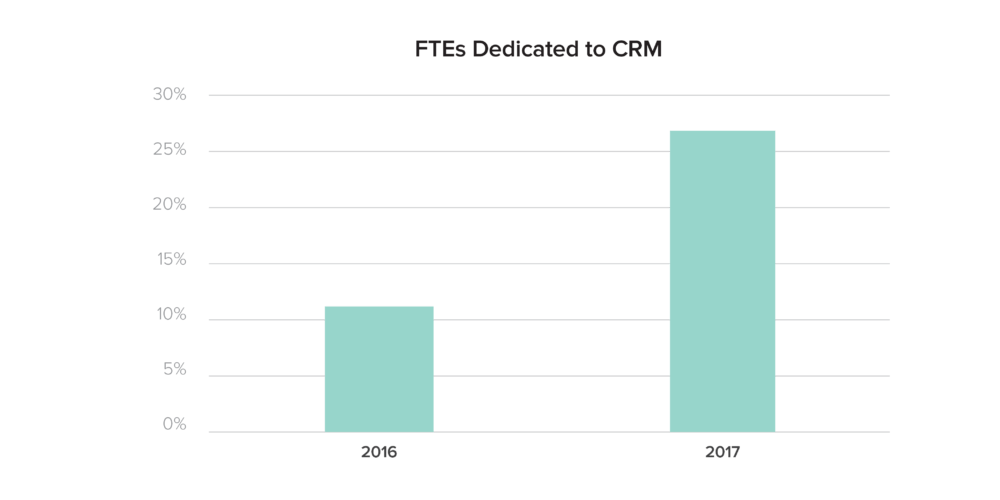
Clearly we’re investing more in the technologies that can move the needle, and expect to see the type of returns we can talk to our CFO about. To help drive this, we need to put the right people behind the systems. The pattern is familiar: implementation of the new marketing technology precedes increased specialist staffing. And both of these drive budget. If you haven’t yet encountered this, you will. And understand that this pattern repeats itself with other technology stacks. CRM is just a proxy for a whole range of sophisticated marketing technologies that require dedicated personnel and significant budget. And budget is what healthcare marketers increasingly cite as the biggest barrier to their marketing success. (For ‘leading’ organizations, budget is a close but notable second to ‘lack of time’.)
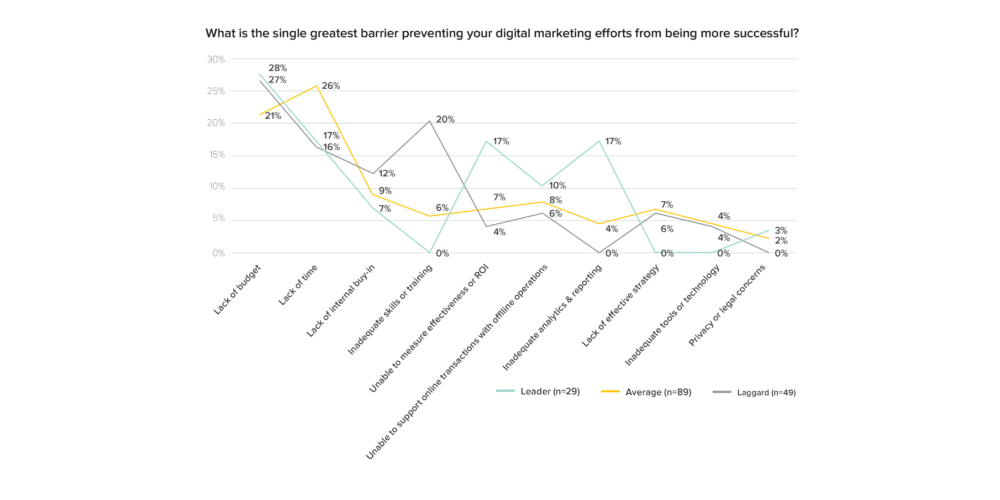
Again, this trend largely reflects what’s happening outside of healthcare. There’s plenty of research that speaks to it. For example, new B2B and B2C marketing research by Conductor (a marketing software vendor and agency) reveals that marketers identify ‘budget’ and ‘personnel’ as their top challenges. Furthermore, 70% of marketing executives plan to spend more on marketing technology in 2017 than they did in 2016. One quarter of them expect to spend 26%-50% more.
Interpreting “No Interest” In CRM
But what about organizations that are not yet investing in CRM? A casual glance at the data might lead you to conclude that 30% of healthcare organizations don’t even have CRM on their radars. Here’s my read on this.
A fair percentage of these organizations are cautious adopters. They see the potential in CRM and expect it to play a role in their future marketing strategy, but recognize that they are not currently ready for it. In many cases, they have internal retooling to do before tackling an integrated CRM system. Based on my conversations, I expect that in 2017 many of these organizations will begin developing their plans for adopting CRM in 2018.
For other organizations, CRM is already on the agenda…but the initiative is being driven by groups outside the marketing team. As such, there is a reporting bias in the survey data.
And lastly there are a few organizations out there for whom CRM is truly not part of any discernable future strategy. Many of these organizations likely struggle to keep pace with competitors who are able to successfully capitalize on their CRM and other marketing technology investments. They will rush to embrace CRM (or any new technology) only when it’s clear that they are losing market share. Unfortunately, martech like CRM is complex. Rushed and reactionary implementations seldom meet with success.
This Is Just The Beginning
Understanding that we’re in the midst of enormous change in marketing is certainly important and has a very real impact on your work and plans in 2017. We’ve discussed CRM as just one example of a number of new marketing technologies that are shaping marketing budgets in the new year. If you’re not investing in them and they aren’t part of your strategy, you’re likely going to face increased competition from organizations who are.
But the takeaway is not to rush out and adopt sophisticated new martech just because you want to keep pace. And neither is it to sit back and congratulate yourself for already having a few new tools in your martech stack.
Instead, understand that we’re just in the beginning of a huge marketing shift that’s going to shape the future of all our work. Along the way marketing teams will need to fundamentally change. Not just once, but again and again, ad infinitum. Yesterday’s media buyer is today’s programmatic advertiser. And tomorrow he or she will be something different again. The key will be to develop a marketing strategy that helps you identify opportunities and adapt as necessary in a space being constantly redefined by technology.
While your marketing technology budget may never actually outgrow your CIO’s technology budget, expect major and continued investments in martech infrastructure and capabilities going forward. And this will mean that marketing teams will increasingly look like IT teams in skills and specializations. In order to help the healthcare brand succeed through it all, the CMO will need to either drive the required change, or s/he will be driven over by it.
About The Research
Geonetric reached out to 217 healthcare organizations, agencies and vendors to identify the current trends in digital marketing. The full 2017 Digital Marketing Trends in Healthcare research report is freely available to all healthcare marketing professionals.











